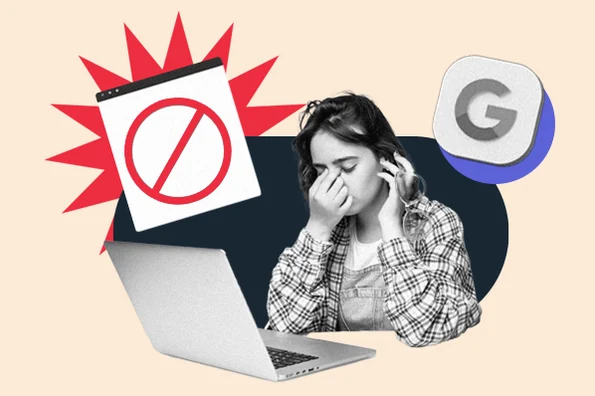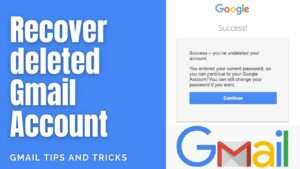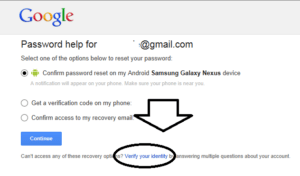How to Recover From a Google Penalty
How to Recover From a Google Penalty? A Google penalty can be a devastating blow to your online visibility. Whether it’s caused by your own SEO efforts or by a bad SEO agency, you can lose a lot of traffic and conversions.
How long it takes to recover from a Google penalty depends on a few factors. Here’s how to identify the problem and take action.
introduction
Google is like a club with rules, and if you violate these rules you could be penalized. Depending on the severity of your penalty you could see a significant drop in visibility or even disappear completely from search results. If you are hit with a penalty it is important to understand what caused the problem and how to correct it.
Recovering from a Google Penalty can be a long and difficult process, but it is possible to get back into good standing with the search engine. This article will discuss some best practices and tips for recovering from a Google penalty including steps to identify the issue, fix it, submit a reconsideration request, and monitor your progress.
First and foremost, it is important to follow Google’s Webmaster Guidelines and best SEO practices to avoid getting penalties in the future. This will not guarantee that you won’t be hit with a manual or algorithmic penalty, but it will make the odds of that happening much lower. It is also a good idea to subscribe to reputable SEO blogs so that you can stay up-to-date on news, best practices and case studies.
Understanding Google Penalties
Whether you’re experiencing a penalty or not, it’s important to understand how Google penalties work. This includes understanding what types of penalties exist, how they are administered, and what the implications of a penalty can be.
There are two general categories of Google penalties: manual actions and algorithmic penalties. Manual actions are imposed by human reviewers on websites that are found to violate search quality guidelines. These penalties can be a result of either a single mistake or a long-term pattern of violations.
Algorithmic penalties are imposed by Google’s automated algorithms on sites that have been determined to be violating search quality guidelines. These types of penalties can be on a domain-wide scale, which means that all keywords for a website are affected by the penalty. Or they can be on a keyword level, where one specific keyword sees its rankings plummet.
Generally speaking, the best way to determine if your site has been hit by an algorithmic penalty is to check your Google Analytics data. This will give you a good indication of when significant traffic dips occurred. And how those changes correlate to various Google algorithm updates. For example, Moz has a great page that lists every Google update as it happens. So you can see which ones have the most impact on your website.
Identifying the Type of Penalty
Google penalties can be one of the most devastating blows a website will experience. They can cause organic search traffic to drop significantly, leading to a loss of leads and sales. In extreme cases, a site may even be deindexed completely.
It’s important to understand the different types of penalties so you can take the right corrective action. The first step is identifying whether you have an algorithmic or manual penalty. Manual penalties are triggered by violations of Google’s webmaster guidelines. While algorithmic penalties are the result of a change to Google’s search algorithm.
It’s easy to tell if you have an algorithmic penalty because Google will notify you of the penalty through Google Search Console. You can also check your traffic history to see if there have been any major dips that coincide with a Google algorithm update. Moz has a useful timeline of historic Google algorithm changes that you can use to help identify when an algorithmic penalty could have been triggered. The recovery process from an algorithmic penalty is generally less severe than a manual action.
Analyzing the Root Cause
Getting hit with a Google penalty is one of the most harrowing experiences for an SEO professional. It can be very difficult to recover from a manual or algorithmic penalty without understanding why it was imposed in the first place.
Generally, Google penalties result from either bad on-site practices or unnatural link-building techniques. However, it’s important to remember that no website is perfect and even the most reputable websites can make mistakes that may result in penalties.
This is why it’s important to thoroughly analyze the last time you did any SEO on your website or for its content. This includes internal actions like keyword stuffing. Content duplication or low-quality content and outside actions like hiring a less-than-reputable agency that uses black hat tactics to deliver higher rankings (link buying, guest posting etc.).
For example, one of our clients lost 80% of their organic traffic because they were part of a private blog network and didn’t realize it until after they had been penalized by Google.
Taking Immediate Corrective Actions
The first step in penalty recovery involves getting to the root cause. This could mean cleaning up spammy links, reassessing your content marketing strategy, or changing the way you manage SEO campaigns. In some cases, it might even involve removing old or irrelevant pages.
A thorough analysis of your website is also vital. Leverage tools like Google Analytics and Search Console to check for significant drops in traffic and rankings and technical issues such as crawl errors or security alerts.
If you’ve been hit with a manual penalty, look for the notification in your Search Console dashboard under “Security and Manual Actions”. This is your early warning system – don’t ignore it! Manual penalties are imposed by human reviewers for violating Webmaster Guidelines, including link schemes, unnatural links, and other practices. Algorithmic penalties, on the other hand, are triggered by changes in search ranking algorithms and can be harder to identify. It’s best to wait for a major update before checking your rankings and taking corrective actions.
Submitting a Reconsideration Request
Getting hit by a Google penalty can be one of the most terrifying experiences for any webmaster or online marketing professional. Fortunately, it’s also usually possible to recover from such penalties and return to good standing. However, this is a complex and delicate area that requires expert knowledge to navigate successfully.
The first step in recovering from a Google penalty is to identify the type of penalty that was imposed. Manual action penalties are triggered by violations of Google’s Webmaster guidelines. Which include keyword stuffing, thin content, cloaking and other similar activities. Algorithmic penalties, on the other hand, are triggered by changes in Google’s search ranking algorithm.
The next step in recovering from a Google penalty is taking steps to fix the problem. For manual penalties, this typically means removing any unnatural links from your site. For algorithmic penalties, this often means ensuring that your content is high-quality and follows best practices for SEO. Finally, it’s essential to monitor your progress and performance after making the necessary changes. This will give you a better idea of how long it will take to recover from a Google penalty.
Monitoring Performance and Progress
It’s important to keep track of your progress throughout the penalty recovery process. This can help you determine when your site is back on track and ensure that you’re following Google’s guidelines. You can do this by checking your website traffic regularly. By doing this, you’ll be able to spot any major traffic dips and identify the updates that upset your position.
It is also a good idea to monitor the dates of any algorithm updates. This will help you understand what changes have been made and whether they are the reason for any penalties that your site has been hit with. There are many different resources available online that can be used to track these changes.
In case of a manual penalty, it’s best to check the results of your reconsideration request in Google Search Console. You can find the reconsideration request form in there, after verifying your ownership of the website. You will need to submit a comprehensive report detailing everything you have done to clean up your site and ensure that it meets Google’s quality standards.
Preventing Future Penalties
The best way to prevent future penalties is to make sure that you follow Google’s guidelines. This is especially important if you’ve experienced a manual action penalty. Google will need to verify that you have fixed the issues before they can reconsider your request.
To identify potential algorithmic penalties, you’ll want to analyze your Google Search Console. Look for significant traffic dips and compare them to the dates of any recent Google updates. This will help you pinpoint the update that may have penalized your website.
In most cases, a Google penalty is the result of a flaw in your SEO strategy. Whether it’s poor content, overusing keywords, or unnatural links, these mistakes can be costly and significantly impact your website’s performance. However, recovering from a Google penalty is possible. Just remember to follow the tips above, and you’ll be able to recover from your penalty quickly and effectively! Good luck! If you have any questions, feel free to contact us! We’re always happy to help. – The Digital Marketing Agency


